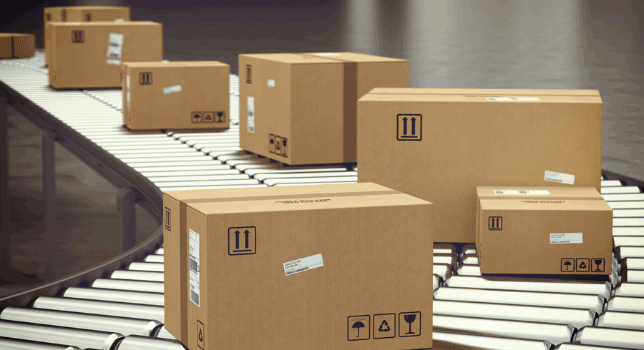Some retailers have worked with industry organizations like ISTA to develop and promote testing protocols to mitigate some concerns, but challenges persist.
One of the most common items retailers encounter is the management of their vast inventory and the efficient handling and storage of products. They deal with a wide array of goods, ranging from small, delicate household items like light bulbs to large appliances and furniture.
The sheer volume and diversity of products pose challenges in terms of logistics, warehouse management, and ensuring the quality and integrity of the goods throughout their journey from the manufacturer to the customer.
When to test?
With such a wide range of products and a complicated supply chain, inevitably there will be damage or loss issues. Testing packaging systems in advance can minimize costs related to damage or losses in shipment. The questions for the retailer :
- Which product lines are generating the biggest issues related to damage and loss?
- What test protocols should be used to effectively reduce damage risk?
- What minimum guidelines should be developed for suppliers?
A few retailers have their own set of standards when it comes to handling and shipping goods, which must be met to ensure customer satisfaction and comply with supplier requirements. Some retailers require transit tests to be completed and reported while others provide recommended guidelines for suppliers to complete as best practice in an effort to reduce damage and chargeback costs.
For example, Sam's Club has specific protocols for evaluating and assessing packaging performance to ensure that products arrive intact and ready for sale. Amazon.com have also developed their own protocols designed specifically to evaluate products as they move through the very specific challenges of eCommerce.
Other big box retailers make recommendations on packaging unit design as well as specific ISTA test protocols to use when preparing to sell through their specific supply chain. These standard protocols utilize many standard test techniques such as drop, compression, environmental conditioning, and vibration.
As a supplier to any of these major retailers, researching the various testing requirements becomes critical to a successful relationship. Questions for suppliers include:
- Are we currently experiencing any damage issues for our product line through a similar supply chain?
- Does the retailer require package testing and a report from an independent, third party testing lab?
- Does the retailer recommend specific test protocols to use?
In many cases, working with an independent, third party laboratory who can conduct the various recommended ISTA protocols can provide the data suppliers and retailers need to be confident that their packaging can hold up in the supply chain. However, with the evolution of supply chains in the past several years, a few key issues have gained additional attention when considering a testing program.
Clamping and Compression: A Delicate Balance
The use of clamp trucks as a material handling technique presents another challenge. In tightly packed shipments, clamping has been used as an alternate way to move goods that may not be palletized or separated by a slip sheet. If not done correctly it can lead to product damage, which can result in financial losses and chargebacks.
Similarly compression, which refers to the weight of stacking , can also cause damage if not properly managed. Balancing the right amount of clamping and compression is crucial to ensure product safety while minimizing potential damage.
Implementing effective compression strategies, such as utilizing vertical space and optimizing pallet configurations, can help retailers store more products in a smaller area, ultimately improving their operational efficiency and reducing costs.
Load Stability: A Critical Concern
Load stability is another critical aspect to consider, as improperly stacked or unsecured merchandise can lead to accidents, damage, and potential loss. Transit methods can vary on stacking options as well as the use of blocking in palletized loads. Smithers has utilized our years of experience in the industry along with industry protocols to develop a custom method to evaluate load stability on various configurations.
Damage Evaluation: The Final Verdict
Despite all precautions, damage during transit or storage is sometimes inevitable. Therefore, a systematic damage evaluation process is crucial to identify and assess the extent of damage, which can help in making informed decisions about revisions to package design or configurations. This process also aids in identifying the root cause of the damage, and documenting the possible solutions to either the packaging itself or handling processes. Effective damage evaluation programs not only help retailers and suppliers maintain the quality of their inventory but also assist in identifying recurring issues that may require adjustments in handling or storage practices.
In conclusion, large retailers like Walmart, Sam's Club, Lowe's, and Home Depot face numerous challenges in their day-to-day operations. Handling and storage concerns, including clamping, compression, load stability, and damage evaluation, are critical for these retailers to ensure the efficient management of their inventory. By adhering to these standards, large retailers aim to provide customers with a seamless shopping experience while also safeguarding the integrity of their products.



